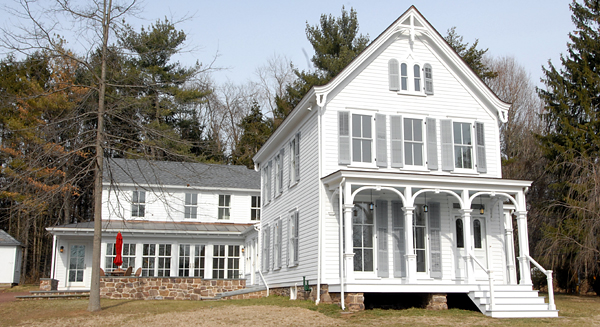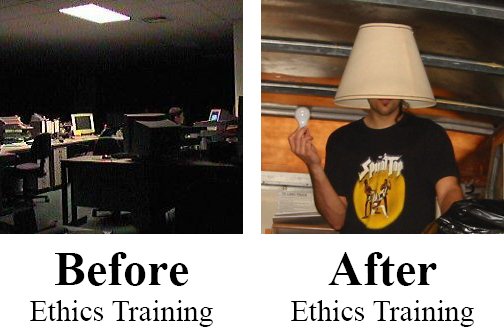Besides a bunch of lawsuits, I mean. Evidently, you get Global Ethics University (GEU), who really, really, really wants to be yourone-stop online ethics and compliance-training provider for both individuals and corporations. From easy, affordable online ethics courses to complete, ready-to-use ethics training curricula, look no further than Global Ethics University. Ethics is a serious problem and requires serious solutions. Of course you can do it yourself or reinvent the wheel, but Global Ethics University has everything you need in one convenient place with packages and prices that suit any size organization.
"Ethics is a serious problem?" Um, no it's not. Ethics means principally the study of habits, which means that it is at bottom a framework for understanding what the problem is and how to solve it. One kind of "serious problem" typically results when unscrupulous people and ineffective management systems get together and do the corruption mamba. Another kind of "serious problem," as I've noted before, occurs when people conflate ethics with compliance (again from the homepage):
You can do something significant and different TODAY to achieve high standards of ethical compliance. The best part is that you don't have to settle for either reflective professional/personal development course or hard-hitting compliance training. You can have BOTH in EVERY Global Ethics University course or training program.Textbook conflation. This kind of thing just reeks of intellectual confusion.
But wait! There's more! From the glossy-pamphlet literature on their "flagship Ethics for a Modern Workforce program":
[The program] is the perfect balance between a no-nonsense compliance program and a personal/professional growth course. The easy, straight-forward program builds participants’ ethical skills and knowledge using practical teaching and real-life scenarios. What makes Ethics for a Modern Workforce unique is that it builds skills in incremental levels, or ethics Competencies."Perfect balance?" They mean that it's both and neither, right? Donkey before the cart and all that, right?

No one told us that the donkey was on a diet.
And the program "builds participants’ ethical skills and knowledge?" Maybe they mean working on participants' ethical reasoning, or something along those lines?
And the uniqueness of the program "is that it builds skills in incremental levels, or ethics Competencies?" The whole incremental education thing has been around since Johan Amos Comenius took the idea mainstream back in 1657 or so. And "ethics Competencies?" First off, the whole capitalization of random nouns thing died off in the early 19th century. And secondly, there are no such things as generalized competencies in ethics. Each person must develop techniques for his/her personal challenges.
If you want to learn pablums bordering on nonsense, it would seem that GEU is you one-stop shop. Otherwise, it's back to the books.



